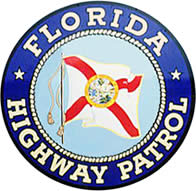Yulee, Fla. – Pedestrian fatalities have increased during 2014, in Nassau County. So far, there have been 7 fatal crashes in Nassau County with 4 of them being pedestrians. Many of these pedestrian fatalities involved alcohol, crossing the roadway illegally or simply not paying attention to approaching traffic. Walking is good for your health, and it’s good for the environment too. But before you head out on foot for a stroll, power walk, or errand, there are important safety tips to remember.
“Just as we have aggressive drivers, we have aggressive pedestrians,” said Sheriff Bill Leeper. “People who are on cellphones, or texting, or on alcohol or some other type of intoxicant contributes to the problem. In that situation, your ability to make wise choices and split-second decisions has become compromised.”
What’s the problem?
Pedestrians—people who travel by foot, wheelchair, stroller, or similar means—are among the most vulnerable users of the road.
Who’s at risk?
Pedestrians of all ages are at risk of injury or death from traffic crashes, but some people are at higher risk.
- Male pedestrians are more likely to die or be injured in a motor vehicle crash than females.
- Teen and young adult (ages 15-29 years) pedestrians are more likely to be treated in emergency departments for crash-related injuries compared to any other age group.
- The rate of pedestrian death generally increases with age.
- In 2012, 33% of all pedestrians killed in traffic crashes were legally drunk, with a blood alcohol concentration of greater than or equal to 0.08 grams per deciliter.
As pedestrians, children are at even greater risk of injury or death from traffic crashes due to their small size, inability to judge distances and speeds, and lack of experience with traffic rules.
- Nearly one in four traffic deaths among children ages 14 and under are pedestrian deaths.
Take Steps for Safety
Whenever you’re walking, keep these tips in mind:
- Cross the street at a designated crosswalk.
- Be careful at intersections where drivers may fail to yield the right-of-way to pedestrians while turning onto another street.
- Increase your visibility at night by carrying a flashlight and wearing retro-reflective clothing.
- Always look left, right, and left again before crossing a street, and keep watching as you cross. Be aware that drivers have differing levels of eyesight and skill in operating motor vehicles.
- Walk on the sidewalk whenever possible. If sidewalks are not available, walk facing traffic on the edge of the road, as far from the travel lane as possible.
- Walk defensively and be ready for unexpected events. Know what’s going on around you and don’t allow your vision to be blocked by clothing, hats, or items that you are carrying.
- Watch the pedestrian signals, not the traffic signal, and follow the “WALK/DON’T WALK” lights (they’re set up to help you cross safely). Look for pedestrian push buttons for crossing protection at signalized intersections.
- Watch out for parked vehicles. Parking lots can be as dangerous as streets.
- Avoid alcohol and drugs as they can impair your ability to walk safely.
- When crossing, use all of your senses and don’t use your cell phone for calls and texting.
- Use particular caution when crossing driveways and alley entrances. Drivers may not expect you to be there or see you.
- Adults should supervise children when crossing streets. Smaller children may be difficult for drivers to see and young children may not be able to judge whether it is safe to cross a street.
“Motorists need to be vigilant of pedestrians and pedestrians need to be vigilant of motorists” said Leeper. “Although motorists have more responsibility under the law when operating a motor vehicle on our roadways, pedestrians have more at stake.”



